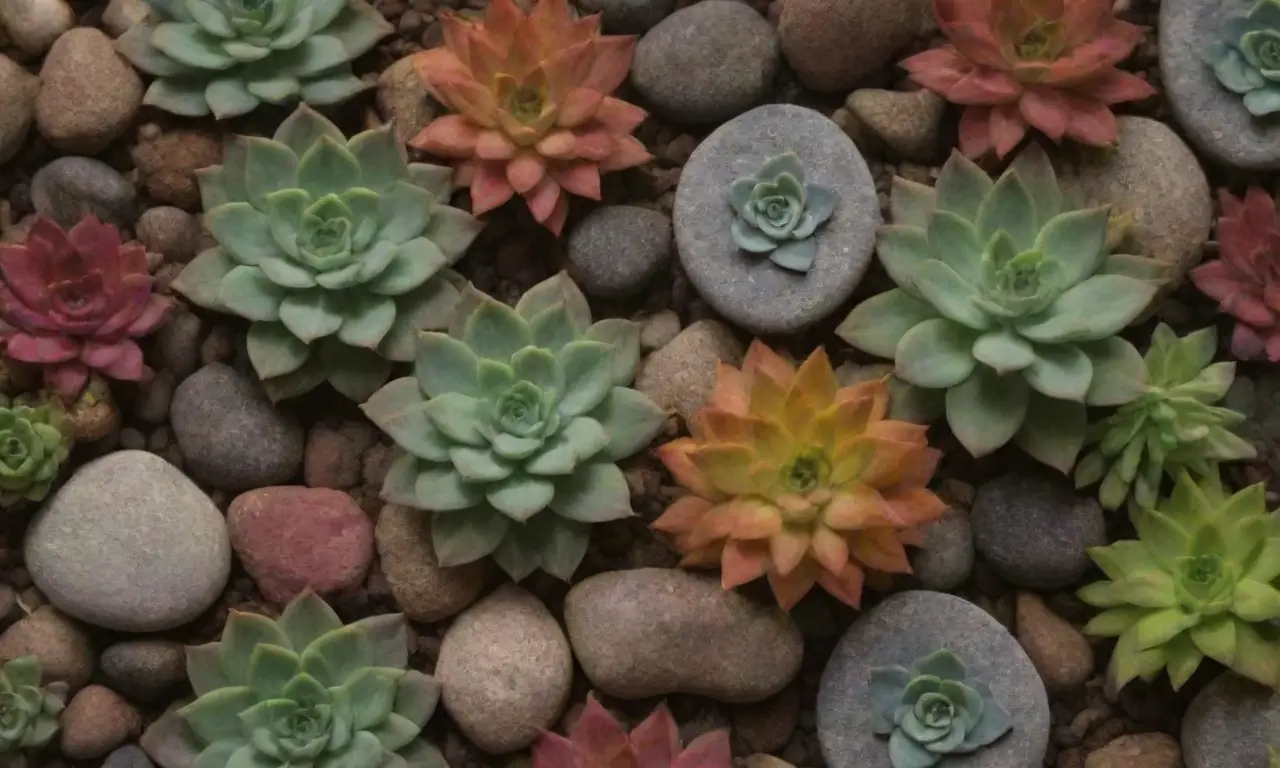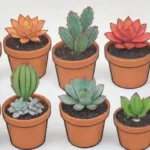
Crafting Layered Terrariums: Best Techniques with Succulents

Introduction
Creating a layered terrarium is a unique and artistic way to bring a slice of nature indoors. This delightful craft not only serves as a stunning decoration but also offers a calming and therapeutic hobby. Layered terrariums, particularly those featuring succulents, have become increasingly popular for their minimal care requirements and striking appearance. Succulents, known for their thick, fleshy leaves that store water, thrive in environments where other plants might struggle. Their diverse forms and colors add depth and character to any terrarium, making them ideal candidates for creating visually appealing designs.
In this article, we will explore the best techniques for crafting your own layered terrarium featuring succulents. We will cover everything from selecting the right materials and plants to layering techniques and maintenance tips. This comprehensive guide aims to equip you with the knowledge and inspiration needed to embark on your own terrarium project. Whether you’re a novice gardener or an experienced plant lover, you’ll find valuable insights into creating a thriving miniature ecosystem in your home.
Selecting the Right Materials
To create a successful layered terrarium, it’s crucial to choose the right materials. From the container to the soil, each element plays a vital role in ensuring the health of your succulents.
Choosing the Container
The first step in your terrarium journey is selecting an appropriate container. Terrarium containers come in a variety of shapes and sizes, including glass bowls, jars, and geometric terrariums. The choice of container impacts not only the aesthetic of your design but also the growth of your plants. Opt for clear glass containers as they allow light to penetrate, which is essential for succulents. Additionally, ensure that your container has an opening for air circulation, which prevents stagnant water and mold build-up.
When choosing the size, consider the number of plants you wish to include. Remember that succulents will grow, so allow enough space for them to spread their roots and flourish. If you are planning to layer your plants, consider a tall or wide container that provides ample depth for layering purposes.
Selecting the Soil
Another critical component of your terrarium’s success is the soil. Succulents prefer well-draining soil to thrive, so a specialized cactus soil mix is ideal for your terrarium. These mixes typically incorporate sand and perlite for improved drainage, preventing root rot, which is a common issue when succulents sit in waterlogged soil. If a pre-made mix is not an option, you can create your own by combining standard potting soil with sand in a 2:1 ratio.
When layering your terrarium, the type of soil is especially important. The first layer should act as a drainage layer, typically comprising pebbles or small stones. This layer serves to collect excess water and keep the roots of your succulents out of standing water.
 Building a Themed Terrarium: Finding Inspiration with Succulents
Building a Themed Terrarium: Finding Inspiration with SucculentsAdditional Materials: Charcoal and Accessories
In addition to soil, consider using activated charcoal, which can be added to the bottom layer of your terrarium. Charcoal helps filter the air and absorb odors, keeping your terrarium fresh. It’s particularly beneficial in a closed terrarium environment.
Lastly, you might want to incorporate various accessories into your terrarium for personalization. These could include small figurines, decorative stones, or driftwood. Selecting accessories that complement your succulents can enhance the visual appeal of your layered design and create a themed landscape within your terrarium.
Layering Techniques
Once you have gathered your materials, it's time to dive into the layering techniques that will bring your terrarium to life. Layering not only creates aesthetics but also establishes a healthy environment for your succulents.
The Base Layer: Drainage and Charcoal
Start by creating the base layer, which is essential for drainage. Pour a layer of small pebbles or stones at the bottom of your container, ensuring it is about an inch deep. This layer acts as a catchment area for excess water, preventing it from sitting in the soil above.
Following the pebbles, add a thin layer of activated charcoal. This layer—which can be about half an inch—helps filter water and air within the terrarium, creating an environment that is less likely to develop mold or foul odors. Efforts spent on a robust base will pay off in the long-term health of your plants.
The Soil Layer: Planting Medium
Over the charcoal layer, add your well-draining soil mix (approximately 2-3 inches deep). When applying soil, ensure it is level and free of air pockets, as this encourages healthy root development. A common technique for working with succulents is to create small wells in the soil where each plant will sit. This allows you to space the plants appropriately and reduces their chances of stress upon planting.
Before planting, take a moment to arrange your succulents above the soil; this helps in visualizing the final layout. Once you decide on the arrangement, gently place each succulent in its well, backfilling soil around the roots without packing it too tightly. Succulents need some room to breathe via the soil, so an airy mix is essential.
 Exploring Terrarium Ecosystems: Succulents and Beyond
Exploring Terrarium Ecosystems: Succulents and BeyondThe Top Layer: Decorative Elements
After planting, consider adding decorative elements to your terrarium. This top layer can include additional soil if desired, but it often focuses more on aesthetics with the addition of moss, small stones, or decorative pebbles. This layer not only beautifies your terrarium but also helps to retain some moisture within the soil, benefiting your succulents.
By incorporating elements like colored gravel or natural driftwood, you can create a miniature landscape that reflects your personal touch. Feel free to experiment with various textures and colors until you achieve the desired look. Just ensure that everything added does not overwhelm the plants or block light from reaching them.
Caring for Your Layered Terrarium

Creating a layered terrarium is just the beginning; proper maintenance ensures that your succulent garden thrives in its new environment. While succulents are relatively low-maintenance, they do require specific care based on their growing needs.
Light Requirements
Light is one of the most important factors to consider when maintaining your terrarium. Place your terrarium in a location where it can receive bright, indirect light. Succulents flourish in bright light but can scorch in direct sunlight, especially if your terrarium is made of glass, which can magnify the sun's rays. If you notice that your succulents are stretching or becoming leggy, this might indicate that they are not receiving enough light.
Consider rotating your terrarium occasionally to expose all sides of the plants to light. During the winter months or in low-light conditions, you may need to supplement with artificial light sources to keep your succulents healthy and vibrant.
Watering Techniques
Overwatering is one of the most common reasons for succulent failure, so it’s vital to understand the watering needs of your terrarium. Allow the soil to dry out completely between waterings, as succulents are incredibly adept at storing moisture. When you do water, use a small measuring cup or a spray bottle to deliver water directly to the soil, avoiding the leaves.
 How to Host a Succulent Terrarium Workshop with Friends
How to Host a Succulent Terrarium Workshop with FriendsIn a closed terrarium, humidity levels can be higher, which may reduce the need for frequent watering. Keep an eye on the moisture levels and adjust your watering routine accordingly. A good rule of thumb is to check the soil's moisture content every two weeks, watering lightly only when it feels dry.
Trimming and Replanting
As your succulents grow, you may find that some plants become overcrowded or need rejuvenation. Regular trimming helps maintain the aesthetic and health of your terrarium. Remove any dead leaves or overgrown shoots to encourage more robust growth and keep the design clean.
If your succulents begin to outgrow their space, you may need to replant or transfer some of them to separate pots. This not only prevents overcrowding but also allows you to propagate new plants from cuttings.
Conclusion
Crafting a layered terrarium featuring succulents is an engaging and fulfilling project that allows nature to flourish in your home while enhancing your space's aesthetic appeal. By selecting the right materials, mastering layering techniques, and providing proper care, you can create a thriving miniature ecosystem that showcases the beauty of succulents.
Whether you're looking to brighten up your workspace or gift a unique piece to someone special, a well-crafted terrarium serves as a living expression of creativity and nature. It offers a glimpse into a vibrant world where you can escape the chaos of everyday life.
So why wait? Gather your materials and begin your terrarium journey. With every layer, you’re not just creating a beautiful piece of art; you’re also cultivating a small yet dynamic living environment. Enjoy the process and let your creativity flourish as you craft a stunning layered terrarium that brings joy and tranquility into your life.
 Mini Terrarium Designs: Small Succulent Displays with Impact
Mini Terrarium Designs: Small Succulent Displays with ImpactIf you want to read more articles similar to Crafting Layered Terrariums: Best Techniques with Succulents, you can visit the Terrarium Design category.





You Must Read